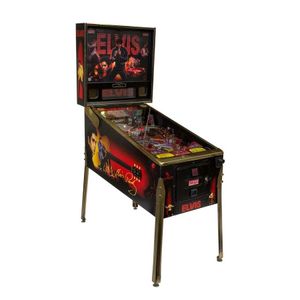Regence-style Oak Commode with Carved Drawers and Cabriole Legs
You must be a subscriber, and be logged in to view price and dealer details.
Subscribe Now to view actual auction price for this item
When you subscribe, you have the option of setting the currency in which to display prices to $Au, $US, $NZ or Stg.
- Oak - Native to Europe and England, oak has been used for joinery, furniture and building since the beginning of the medieval civilisation. It is a pale yellow in colour when freshly cut and darkens with age to a mid brown colour.
Oak as a furniture timber was superceded by walnut in the 17th century, and in the 18th century by mahogany,
Semi-fossilised bog oak is black in colour, and is found in peat bogs where the trees have fallen and been preserved from decay by the bog. It is used for jewellery and small carved trinkets.
Pollard oak is taken from an oak that has been regularly pollarded, that is the upper branches have been removed at the top of the trunk, result that new branches would appear, and over time the top would become ball-like. . When harvested and sawn, the timber displays a continuous surface of knotty circles. The timber was scarce and expensive and was used in more expensive pieces of furniture in the Regency and Victorian periods. - Foliate - Decorated with leaves or leaf-like forms.
- Cabriole Leg - The cabriole leg evolved from an elongated scroll, curving out at the knee which may or may not be carved, and forming a serpentine shape as it descends to the foot.
First introduced into English furniture in the late 17th century, cabriole legs were widely used during the Queen Anne and early Georgian periods, where they frequently terminated in a pad foot or ball and claw foot. The style has had many imitators since then. The cabriole leg was re-introduced in the mid-19th century, and is commonly associated with the balloon-back dining or drawing-room chairs made in walnut, mahogany or, in Australia, cedar. The Victorian cabriole leg, on the whole, was rather more slender than the earlier form, following the French style, which emphasized the delicacy and daintiness of the chairs they were designed to support. Cabriole legs are sometimes found on windsor chairs, especially those made during the 18th century. - Commode - The word "commode" when used to describe an item of furniture, has three usuages:
1. As used to describe an item of English furniture, it refers to what is euphemistically called a 'night table', that is a small cabinet concealing a chamber pot.
2. In its 18th century French usuage it describes a low and highly decorated chest of drawers for salons and reception rooms. A bombe commode is a commode with rounded sides and front, giving the chest a somewhat swollen look.
3. It is also used to denote a half round or serpentine shaped cabinet, with panelled doors, standing on legs. They were pieces on which the cabinetmaker lavished his most accomplished art, with rich veneers, marquetry inlays, gilt mounts and other ornamentation.
This item has been included into following indexes:
Visually similar items

Bulgari, an 18ct gold automatic wristwatch with date Ref DG35G case L0124 'Diagono' automatic lever movement, fully jewelled, textured silvered dial, applied baton and Arabic numerals at 6 and 12, luminous hands and centre seconds with date aperture, the c

Russian silver: pair of silver, enamel and gold gilt finished teaspoons by Aron Berg of St.Petersburg; plus, Russian silver niello spoon c1857, Moscow. VG condition (3 items)

An Elvis Presley gold series pinball machine made by Stern Pinball Inc., limited edition of 500 worldwide, 191 cm high, 70 cm wide, 134 cm deep

A small Regency rosewood side table, of plain oblong shape with single drawer, the gun barrel column support with acanthus leaf carving, the platform base with four scroll feet. 61 cm x 39 cm x 75 cm
